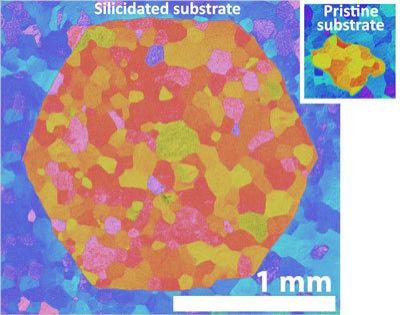Researchers at Oxford University demonstrated how millimeter-sized crystals of high-quality graphene can be made in minutes instead of hours. In about 15 minutes, the method can produce large graphene crystals (around 2-3 millimeters in size) that it would otherwise take up to 19 hours to produce using current chemical CVD techniques.

The researchers took a thin film of silica deposited on a platinum foil which, when heated, reacts to create a layer of platinum silicide. This layer melts at a lower temperature than either platinum or silica, creating a thin liquid layer that smooths out nanoscale 'valleys' in the platinum so that carbon atoms in methane gas brushing the surface are more inclined to form large flakes of graphene.
This method may open up many possibilities for cost-reduction and larger-scale graphene production for applications where very high quality graphene is needed. Beyond speed and quality, the method could also have additional benefits: with a thicker liquid layer to insulate it the graphene might not have to be removed from the substrate before it can be used - a costly and time-consuming additional step required with all other methods.
The method is still, of course, in proof of principal stage, and much more work will be required in order to achieve an actual graphene production technology.